Upcoming Intel Based Motherboards from GIGABYTE, ASUS, MSI and ASRock
by Ian Cutress on April 28, 2014 3:30 AM ESTMSI’s New Products
The news from MSI’s range comes by virtue of some initial leaked images that were retracted. In response to the knowledge reaching the zeitgeist of the cutting edge technology followers, MSI offered these images direct from source but with the Intel-specific details missing. We saw a small amount of these upcoming products by virtue of MSI’s presence at CeBIT, where MSI was asking media for their thoughts.
The images provided by MSI cover a large user base from SFF to extreme high end. They all bare the Gaming moniker so far, although MSI does have three distinct ranges including its OC range (MPower, XPower) and channel range which we should see more of at a later date.
First one on the list is a mini-ITX motherboard, the I-Gaming:
For a start the rear IO looks almost backwards. The audio jacks are at the top of the board, and the Clear_CMOS switch is at the bottom. It looks like MSI have moved towards a WiFi card on the rear as well, a change much welcomed. The socket area sits low giving some space for coolers, and at the top is the 24-pin ATX power connector alongside four SATA ports. There is a USB 3.0 header, and we can see an EM shield for the audio codec at the top. The CPU power connector is an odd place near the rear IO, meaning cables will have to reach over the motherboard to get to it.
At the top of the line, MSI has on show the Gaming 9 AC:
The rear IO and audio sections of the PCB are covered in what looks like a shield, either for aesthetics or technical reasons perhaps. The sticking out bit on the rear IO looks like a WiFi module, similar to that on the mini-ITX model. There are some overclocking features, such as OC Genie and voltage read points, but for SATA ports we have at least 8 on the motherboard as well as an M.2 between the PCIe slots. The PCIe slots are separated for close-proximity three-way GPU configurations, whereas normally we see the final PCIe slot another section down the motherboard.
We also get the Gaming 7:
The Gaming 5:
And at the low end, the Gaming 3:
The Gaming 3 looks like a stripped down version of the Gaming 9, with less phases in the power delivery, no shield, fewer SATA ports and PCI slots. Audio Boost is still present, as well as the heatsink design.


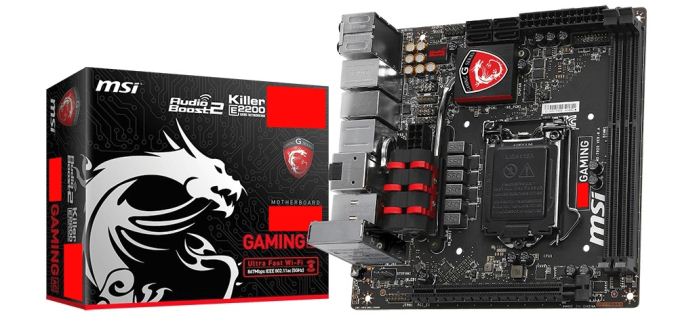
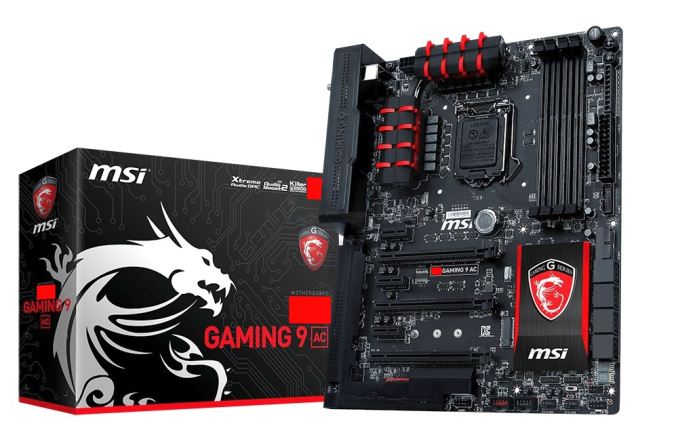
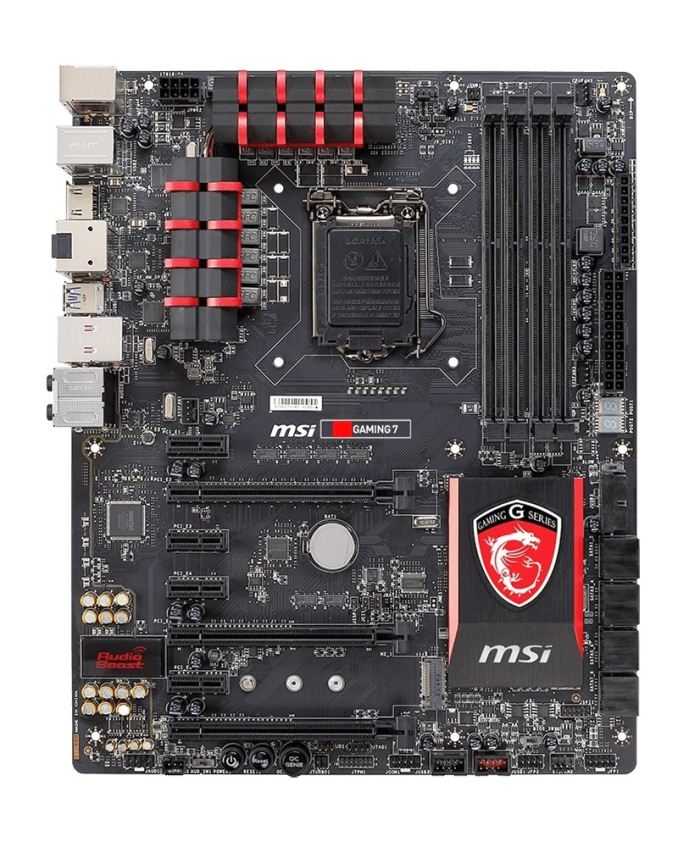
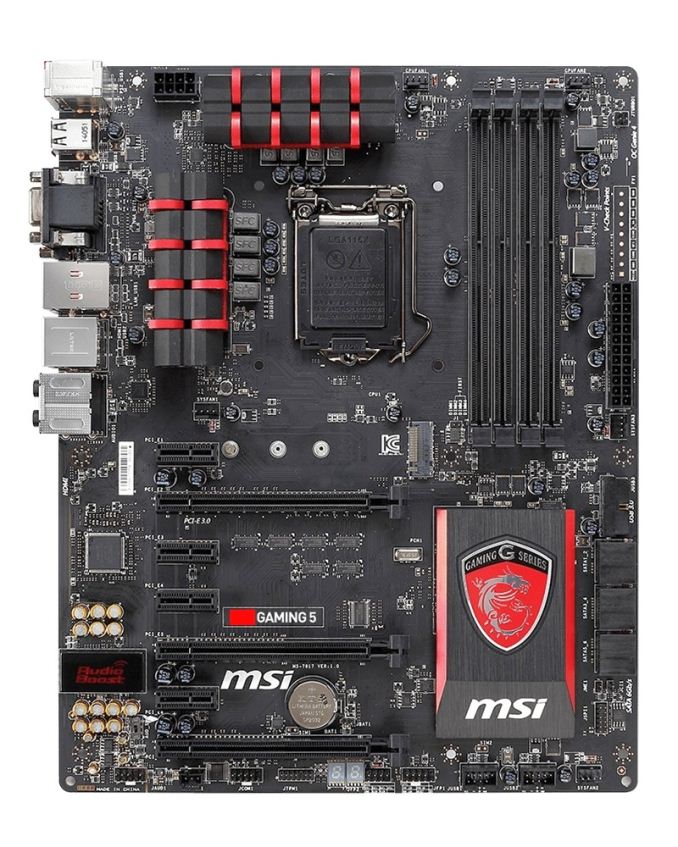
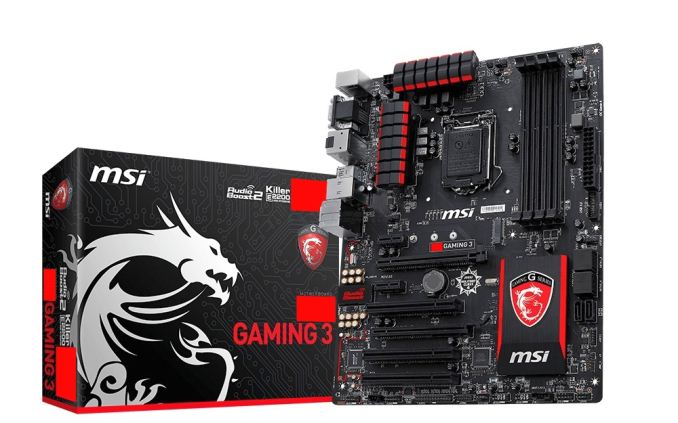














58 Comments
View All Comments
Devo2007 - Monday, April 28, 2014 - link
I know at least one enthusiast site already posted a review of a Z97 board today; a site that, AFAIK has usually adhered to NDAs.Devo2007 - Monday, April 28, 2014 - link
.. Actually, one of the boards shown here (and with non-blurry photos to boot).That said, if the NDA is still in place, kudos to Anandtech for not breaking them. You guys don't need to be "first" to post reviews and such as the quality of content makes any wait worth it.
Flunk - Monday, April 28, 2014 - link
I wholeheartedly agree there, best is much better than first and Anandtech is one of the only top-tier tech sites in my eyes.Antronman - Monday, April 28, 2014 - link
As per the usual, Asus will leave the competition in the dust and be the only choice for a serious build.jimjamjamie - Monday, April 28, 2014 - link
Are they really that much better than say Gigabyte? What makes them better? Genuinely interested as I'm using a G1.Sniper just now and I don't think I have any complaints.willis936 - Monday, April 28, 2014 - link
Their marketing is clearly better. The only reason I went asus on my last build is because the number of fan headers and bios fan voltage control was better than what I found on other boards of the same price. In most cases you'll get what you pay for and just make sure the boxes you want checked are checked (decent audio codec, PCIe requirements, outward facing port requirements, etc.) In the gaming/overclocking market there isn't much variation between products in terms of meaningful stability/overclocking features. The power circuitry has become much less important in recent years because they're all much better than they used to be. The biggest factor is the silicon lottery with your CPU/GPU nowadays.Antronman - Monday, April 28, 2014 - link
Power circuitry still does matter.A couple hundred MHz can mean the difference between a world record or "getting close".
Higher rated caps and VRMs, means more stable and better power delivery.
Fuse protections means any sudden jump in voltage or power problem means that your product won't be reduced to a piece of silicon with a bit of metal.
LN2 mode buttons means more precise OCing for new OCers.
Super stable BIOS.
That's not just the boards, but the GPUs as well.
All that's missing is a good chip.
willis936 - Monday, April 28, 2014 - link
Certainly but people looking to drop a few grand on LN2 aren't people looking to make a stable daily build. If you want more performance on a computer you'll be booting and running daily the chip variation matters a lot more than component quality. I just have a hard time trusting anything I can safely say is more marketing than engineering. A good daily OC will see little difference between a $150 board and a $400 board. What really changes is the storage and peripheral interface features.Antronman - Monday, April 28, 2014 - link
But it will.Less voltage means it is a better OC.
With RoG, you can consistently use less voltage to OC your chip.
RoG has a superior interface, and also way more WC support.
Just about every major watercooling product maker (e.g. EKWB, XSPC, Aquacomputer) has mobo blocks for almost every RoG board.
willis936 - Monday, April 28, 2014 - link
You'll only be using less voltage on better chips.